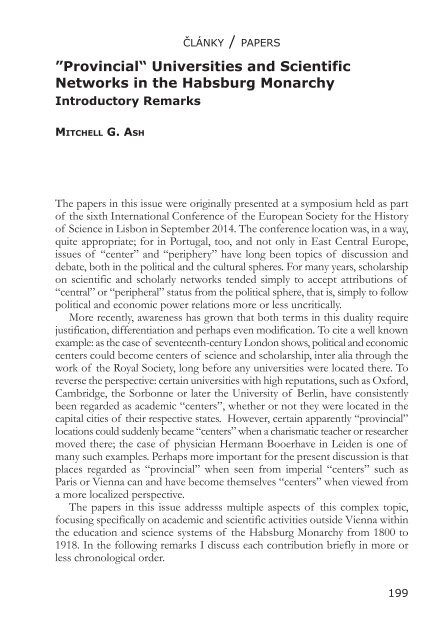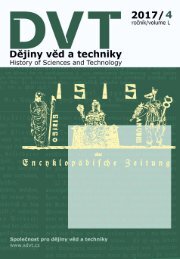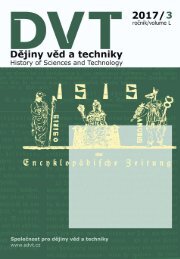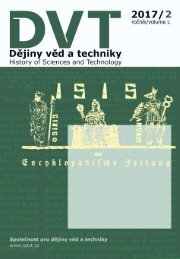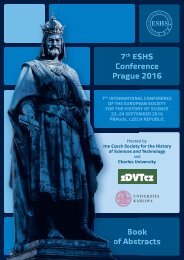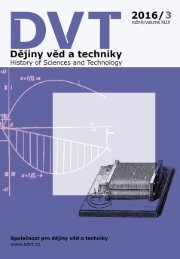Dějiny věd a techniky 2015, 4
Číslo je věnováno 7. mezinárodní konferenci Evropské společnosti pro dějiny vědy, která se konala 22.–24. září 2016 v Praze.
Číslo je věnováno 7. mezinárodní konferenci Evropské společnosti pro dějiny vědy, která se konala 22.–24. září 2016 v Praze.
Create successful ePaper yourself
Turn your PDF publications into a flip-book with our unique Google optimized e-Paper software.
články / papers<br />
”Provincial“ Universities and Scientific<br />
Networks in the Habsburg Monarchy<br />
Introductory Remarks<br />
Mitchell G. Ash<br />
The papers in this issue were originally presented at a symposium held as part<br />
of the sixth International Conference of the European Society for the History<br />
of Science in Lisbon in September 2014. The conference location was, in a way,<br />
quite appropriate; for in Portugal, too, and not only in East Central Europe,<br />
issues of “center” and “periphery” have long been topics of discussion and<br />
debate, both in the political and the cultural spheres. For many years, scholarship<br />
on scientific and scholarly networks tended simply to accept attributions of<br />
“central” or “peripheral” status from the political sphere, that is, simply to follow<br />
political and economic power relations more or less uncritically.<br />
More recently, awareness has grown that both terms in this duality require<br />
justification, differentiation and perhaps even modification. To cite a well known<br />
example: as the case of seventeenth-century London shows, political and economic<br />
centers could become centers of science and scholarship, inter alia through the<br />
work of the Royal Society, long before any universities were located there. To<br />
reverse the perspective: certain universities with high reputations, such as Oxford,<br />
Cambridge, the Sorbonne or later the University of Berlin, have consistently<br />
been regarded as academic “centers”, whether or not they were located in the<br />
capital cities of their respective states. However, certain apparently “provincial”<br />
locations could suddenly became “centers” when a charismatic teacher or researcher<br />
moved there; the case of physician Hermann Booerhave in Leiden is one of<br />
many such examples. Perhaps more important for the present discussion is that<br />
places regarded as “provincial” when seen from imperial “centers” such as<br />
Paris or Vienna can and have become themselves “centers” when viewed from<br />
a more localized perspective.<br />
The papers in this issue addresss multiple aspects of this complex topic,<br />
focusing specifically on academic and scientific activities outside Vienna within<br />
the education and science systems of the Habsburg Monarchy from 1800 to<br />
1918. In the following remarks I discuss each contribution briefly in more or<br />
less chronological order.<br />
199


